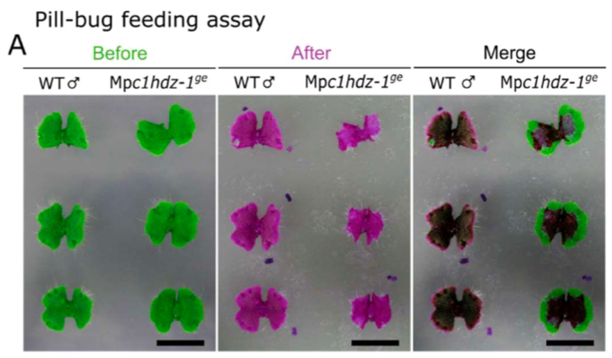
How Marchantia polymorpha avoids bug bites (bioRxiv)
Plant Science Research WeeklyPlants took hundreds of million years to evolve from aquatic to land environments. Biotic and abiotic stress adaptation contributed to the transition. In this preprint, Romani et al. elucidated functions of the transcription factor CLASS I HOMEODOMAIN LEUCINE-ZIPPER (C1HDZ) in the early land plant Marchantia…
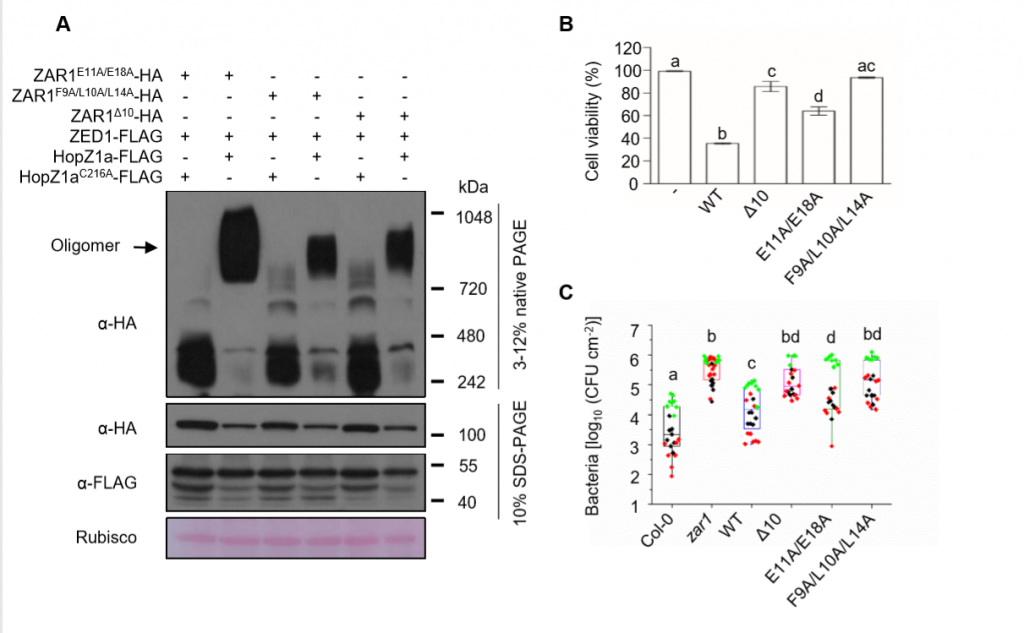
Formation of NB-LRR receptor ZAR1 resistome in vivo ($) (Mol. Plant)
Plant Science Research WeeklyTo fight against pathogenic microbes,plants have evolved intracellular nucleotide-binding, leucine-rich repeat (NB-LRR) receptors, known as NLRs, to monitor pathogen effector proteins and trigger robust immune responses. ZAR1 is a canonical NLR, and a forms a multimeric resistosome complex in vitro…
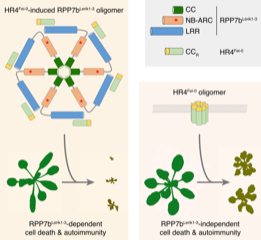
Hybrid autoimmunity and a plant resistosome complex ($) (Cell Host Microbe)
Plant Science Research WeeklyHybrid necrosis occurs when the progeny of a cross between two different plants show widespread cell death. It can be caused by autoactivation of nucleotide-binding and leucine rich repeat domain (NLR) proteins, intracellular immune receptors that play a central role in plant resistance to diverse pathogens.…
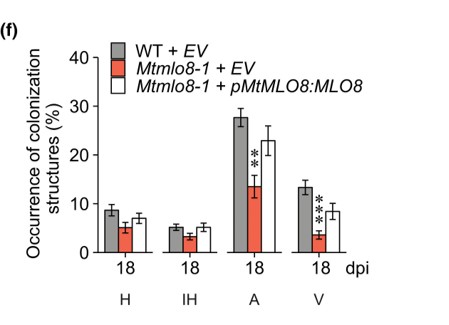
Mildew Locus O facilitates colonization by arbuscular mycorrhizal fungi in angiosperms (New Phytol.)
Plant Science Research WeeklyIn plants, disease resistance genes typically act in a dominant way – the presence of a resistance allele, even a single copy, is enough to confer resistance. The barley gene Mildew Resistance Locus O (MLO1) is different, as it acts in a recessive way; loss-of-function mlo1 plants are resistant to…
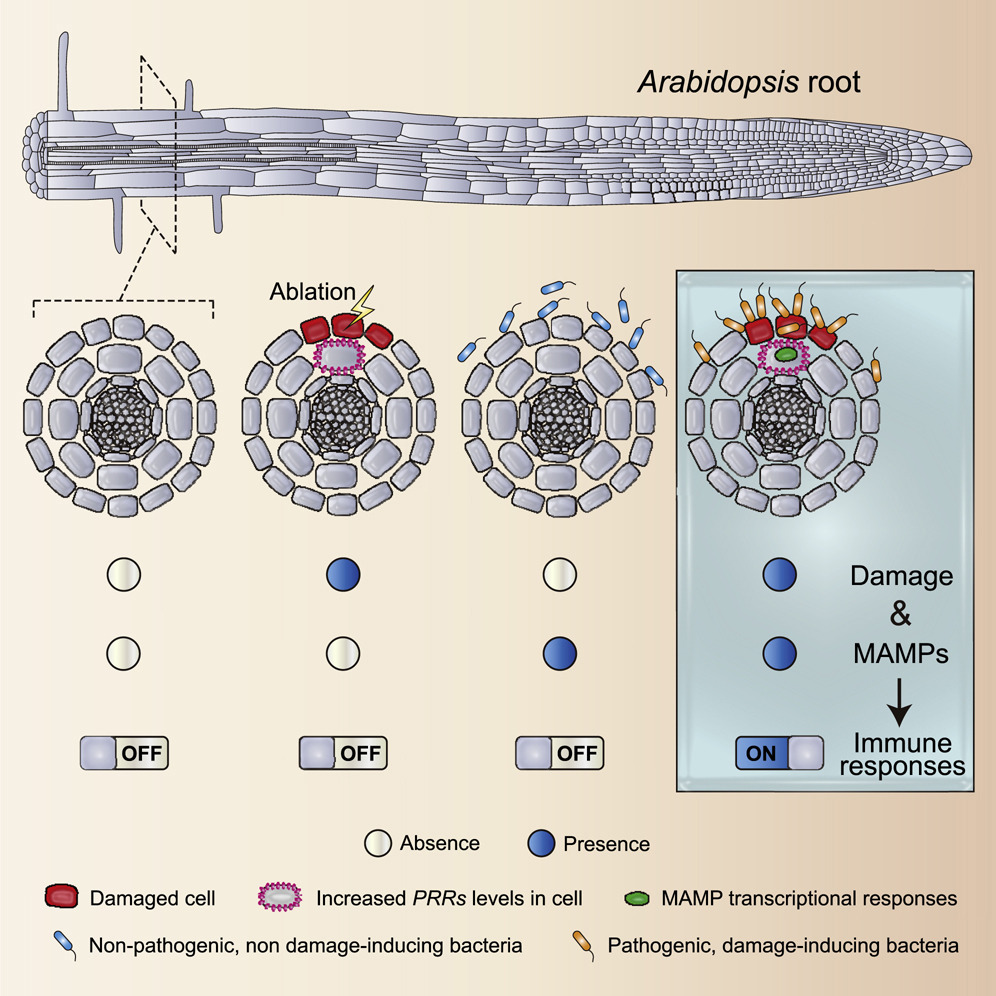
Damage-gated immune responses to microbes (Cell)
Plant Science Research WeeklyPlants are surrounded by diverse microbes and must avoid mounting an immune response against innocuous microbes, while properly activating defense against invading pathogens. As the initial plant-microbe contacts happen in a limited number of cells, understanding spatially-resolved plant immune responses…
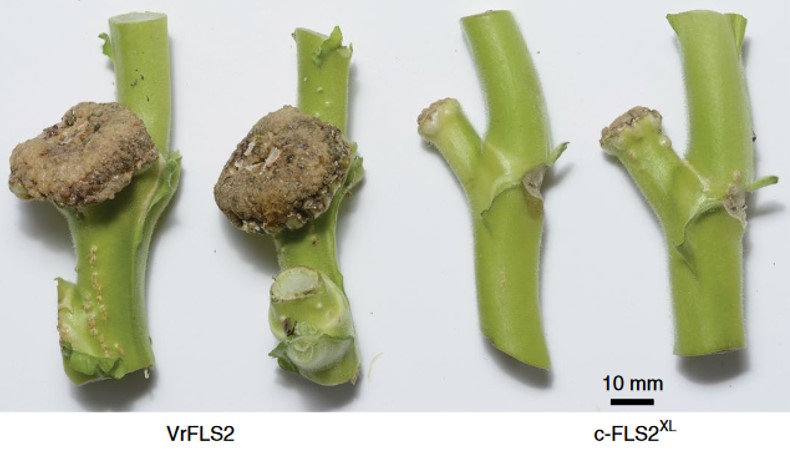
Press Release (Chinese) for IbBBX24 Promotes the Jasmonic Acid Pathway and Enhances Fusarium Wilt Resistance in Sweet Potato
Research, The Plant Cell: NewsPlant cell∣中国农大何绍贞、刘庆昌教授课题组在甘薯蔓割病抗性机理研究中取得突破性进展
近日,国际著名植物学期刊The Plant Cell在线发表了中国农业大学农学院、农业农村部甘薯生物学与生物技术重点实验室何绍贞/刘庆昌教授课题组题为“IbBBX24…

The maize heterotrimeric G protein β subunit controls shoot meristem development and immune responses ($) (PNAS)
Plant Science Research WeeklyHeterotrimeric G proteins transduce signals between receptors and downstream factors. Previous genetic studies have shown diverse roles for these proteins based on loss-of-function phenotypes; for example mutations in Arabidopsis Gα and Gβ subunits both lead to enlarged shoot apical meristems. Wu et…

Three previously characterized resistances to yellow rust are encoded by a single locus Wtk1 (J. Exp. Bot.)
Plant Science Research WeeklyYellow rust is a fungal disease of wheat. Three mutants with enhanced resistance were identified in wild emmer wheat from different locations were previously mapped to the same region of chromosome 1B. Given that each locus showed a different degree of resistance, it was presumed that they were non-allelic.…

Perception of Agrobacterium tumefaciens flagellin by FLS2XL confers resistance to crown gall disease (Nature Plants)
Plant Science Research WeeklyFLS2 is a well-characterized cell-surface receptor that recognizes a short epitope found on most bacterial flagellin proteins. The plant pathogen Agrobacterium tumefaciens, causative agent of crown gall disease, deviates strongly at this epitope region, and so is generally not recognized by FLS2 receptors,…

